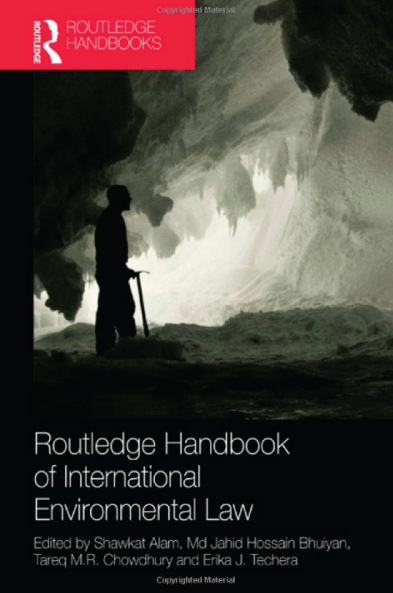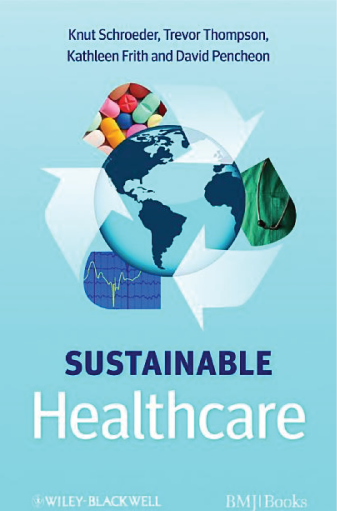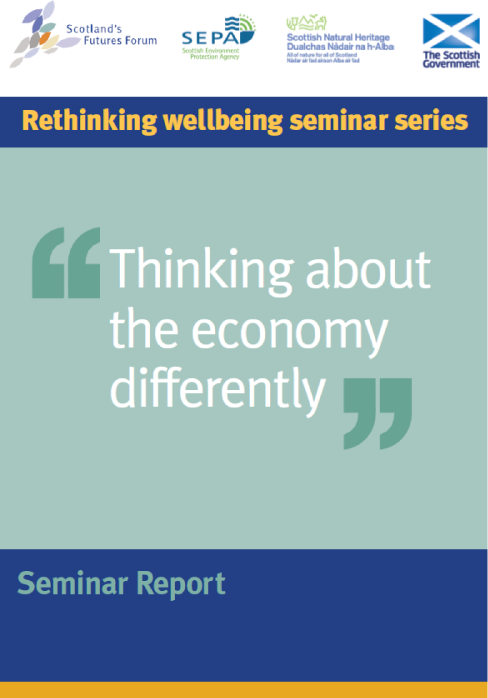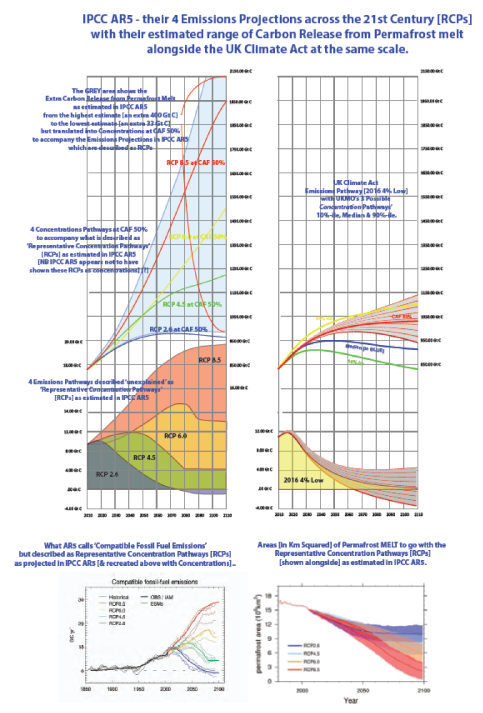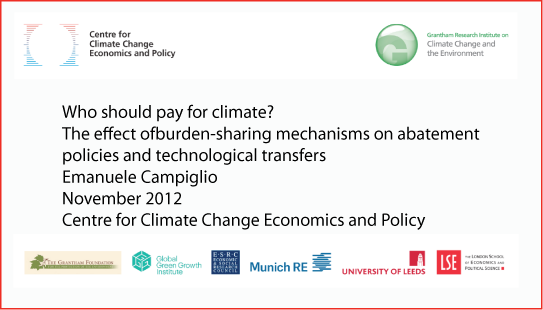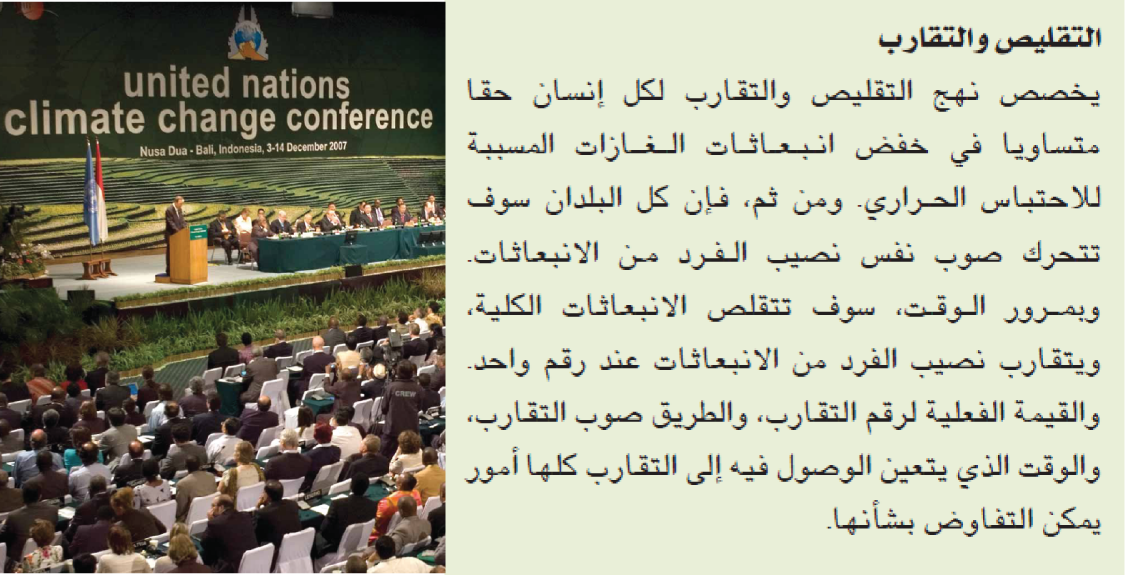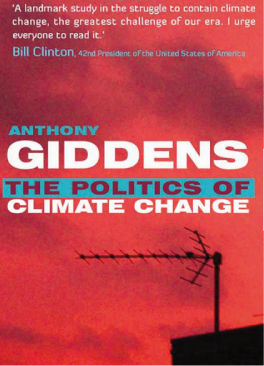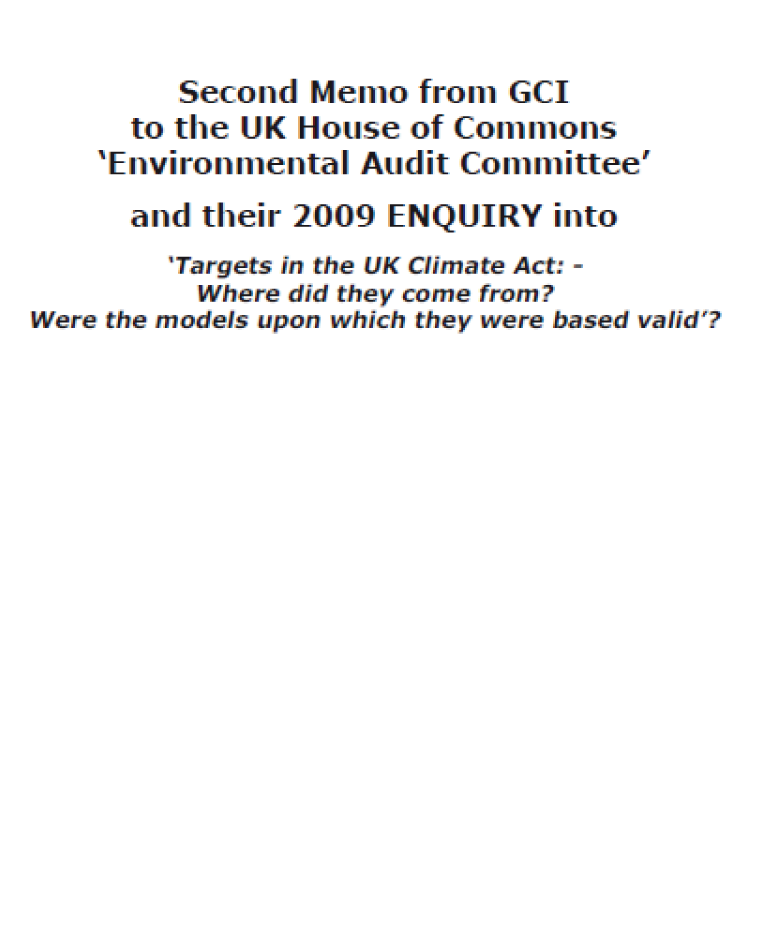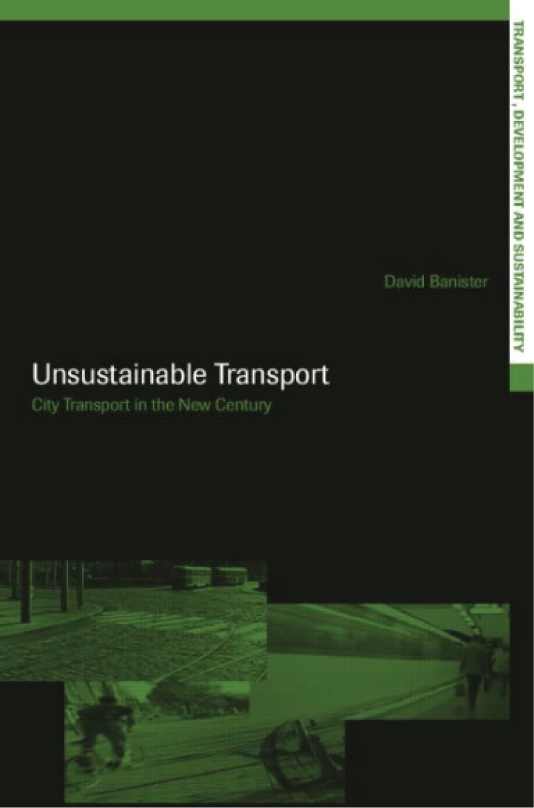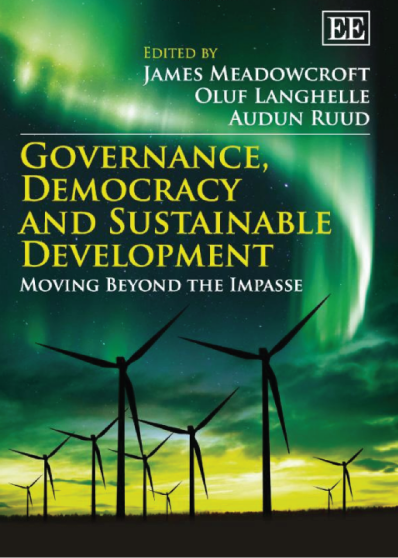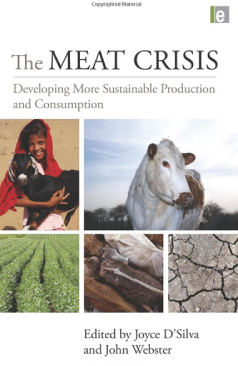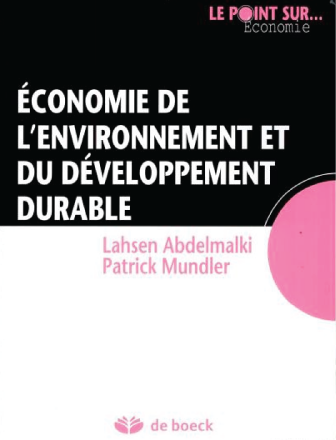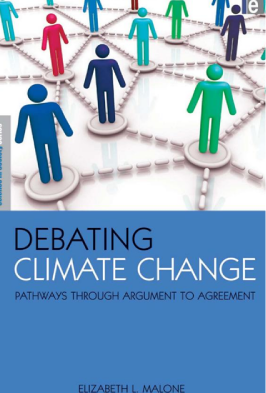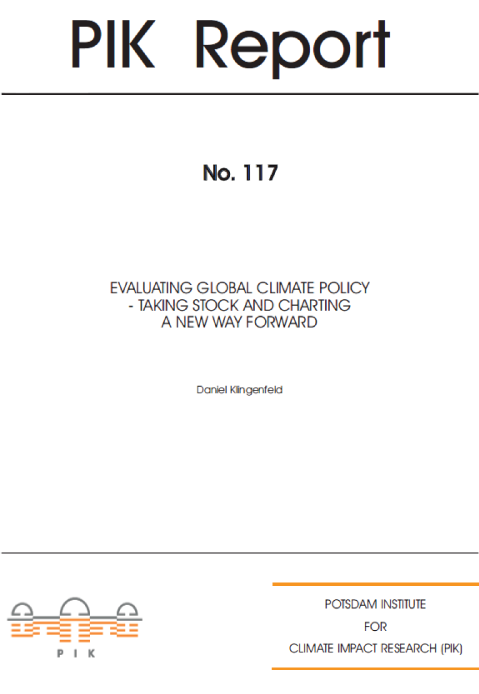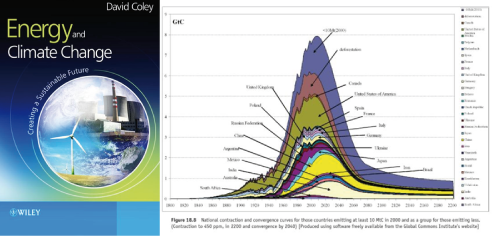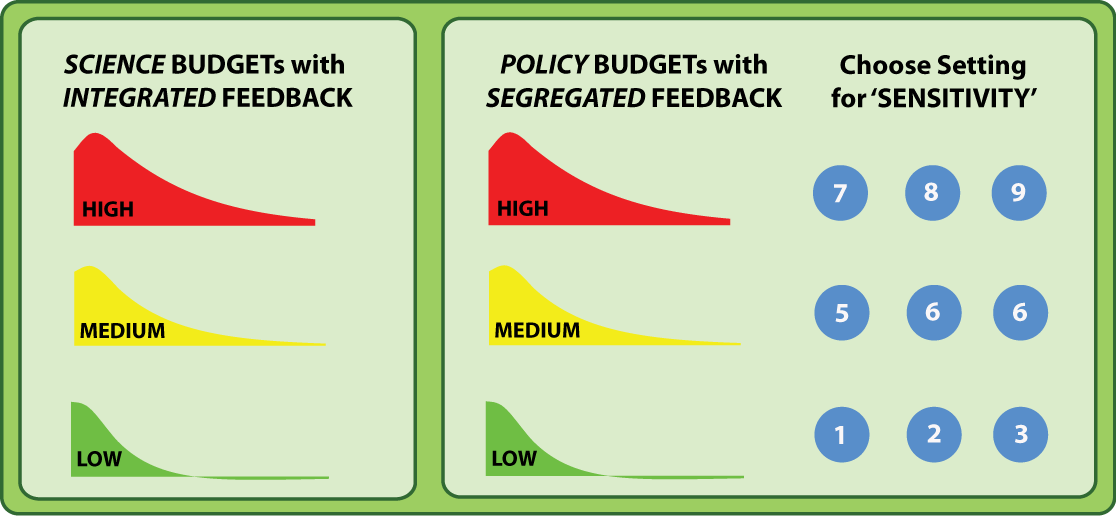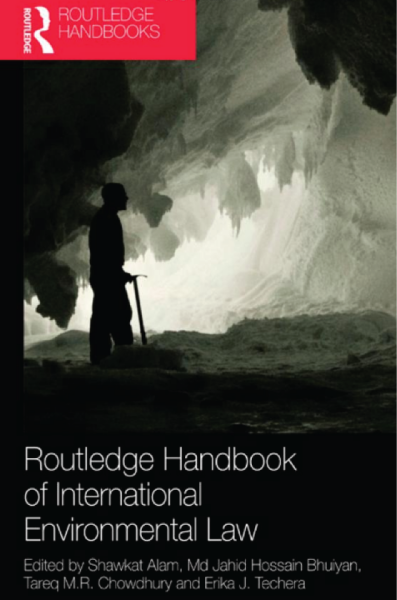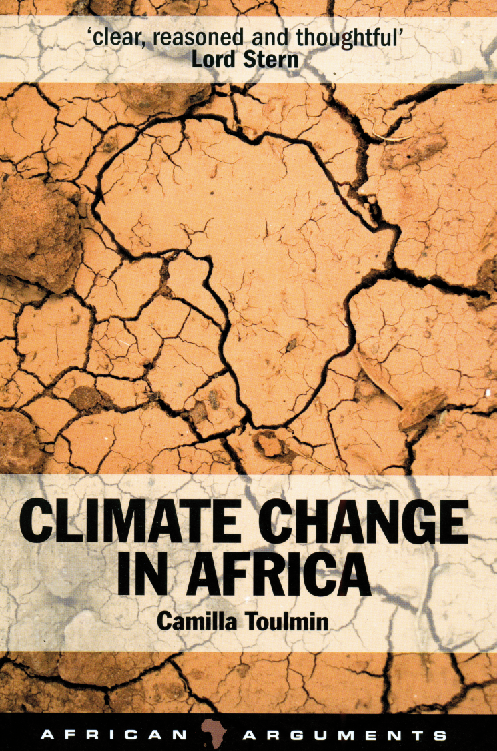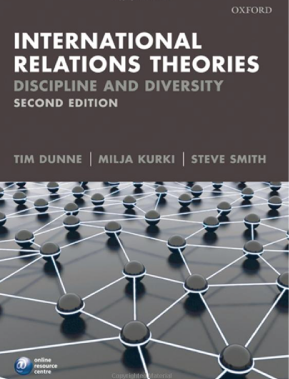 CBAT
CBAT NEWS
NEWS
- Make sustainability a political priority
- Think in terms of systems, and act on the high leverage points (structures and mindsets)
- Develop a bold, new economic vision that plans for the long term and provides for future generations
- Live within safe ecological margins, and redefine our relationship to the natural world and to each other
- Address unjust disparities of wealth and income
- Prioritize meeting the needs of the world’s poor (in both high- and low-income countries) while simultaneously reducing the unsustainable Ecological Footprint of the world’s rich along a global framework of ‘contraction and convergence’
- Redefine prosperity in more than simply economic & consumptive terms, & adopt new measures of progress and wellbeing
- Recognize that a country cannot “go at it alone”, and that reciprocity and cooperation is a key pillar of global wellbeing
Input for Zero Draft compilation document
Canadian Earth Summit Coalition28 February 2013 - "C&C a way of breaking the climate impasse" Routledge Handbook International Environmental Law
One solution to the impasse in the climate change negotiations is a reinvigorated conception of common but differentiated responsibility that imposes differential mitigation obligations on all nations based on historic responsibility, vulnerability, and capacity to reduce GHG emissions.Popularly known as Contraction and Convergence this approach would cap and reduce greenhouse gas emissions by allocating emissions entitlements to each nation based on the above criteria with the ultimate goal of having Northern and Southern per capita emissions converge. Excluding the global South from mandatory emissions caps is fundamentally unjust because it equates countries such as India and China (with their significant and growing emissions) with Sudan and Tuvalu (with their minimal emissions, limited capacity, and significant vulnerability) and guarantees gridlock in the climate negotiations as the planet teeters on the brink of catastrophe.
The Contraction and Convergence approach to climate change will promote environmental justice by scaling back the North's overconsumption of the planet’s resources so that the South will be able to improve living standards - instead of simply grand-fathering the global North's emissions based on the climate regime’s 1990 baseline. Foregrounding justice in the climate change negotiations can also produce a new model of economic development that reduces GHG emissions, improves the well-being of the world's poor.
Routledge Handbook of International Environmental Law
Shawkat Alam, Jahid Hossain Bhuiyan
28 February 2013 - "C&C easy to understand, not straightforward to implement." Sustainable Healthcare Schroeder et al
Contraction and convergence
Contraction is straightforward to understand, if far from straightforward to implement. The world community sets national carbon quotas to gradually Contract people's carbon dioxide emissions to a sustainable level, currently estimated at two tonnes of carbon dioxide per year for each citizen of the world, which is around 13% of the current United Kingdom and 7% of the United States emissions per person. This target aims to keep carbon dioxide concentrations at less than 450 ppm (Chapter 2) and global warming at less than two degrees Celsius. This, as we know, will come with substantive health co-benefits as we swop motorcars for muscle.Convergence recognises that currently many poor nations actually create less carbon than the two-tonnes per-person- per-year target. Under a convergence scheme, these countries could either increase their industrial capacity or sell their carbon entitlement to the rich world through carbon trading schemes.
Sustainable Healthcare
Knut Schroeder, Trevor Thompson, Kathleen Frith, David Pencheon
27 February 2013 - "C&C has a role in tackling climate change." Recent SEPA, SNH, SFF, Scottish Government Seminar
Contraction and convergence has a role in tackling climate change.
We need all these tools, and have to do different things differently.
Rethinking wellbeing seminar series
Thinking about the economy differently
SCOTLAND’S FUTURE S FORUM, SEPA, SNH, THE SCOTTISH GOVERNMENT
26 February 2013 - "At LiveLight we follow the principles of C&C." Design Out Carbon
Design Out Carbon
We all know that climate change is a big deal, but it so often seems that our individual efforts are pointless against such a huge global issue. LiveLight focuses on the things that can improve our lives now, and also do what is necessary to give future generations a better chance of enjoying our beautiful world.At LiveLight, we follow the principles of Contraction and Convergence. You can read more about this here, if you wish. Contraction and Convergence means that people who currently produce very high levels of greenhouse gas need to reduce very quickly, mainly by reducing how much fossil fuel we burn. As fossil fuels are getting more and more expensive anyway, and create numerous health and social problems, this has potential to have huge personal benefits for us all.
Designing out carbon is the easiest and cheapest way to move to a low carbon lifestyle. It is different for everyone, according to your own personal circumstances. We will post further thoughts on how to design out carbon over the coming months - keep an eye on our inspiration page and newsletters. In the meantime, you can sign up to LiveLight and get our free cost and carbon helper, to find out how you can start doing your bit to keep our world beautiful.
23 February 2013 - Led by UKMO, Gov't [eyes wide shut] now funds continuation of flawed hybrid budget approach
This recent Government document from the UKMO-led AVOID programme reads: -"AVOID is a UK research programme funded by DECC/Defra and led by the Met Office in a consortium with the Walker Institute, Tyndall Centre and Grantham Institute."
Download their document to see these graphs at a larger size.
In this flawed hybrid carbon-budget approach from the Government, it continues to create confusion as it fails to distinguish between: -
- budget emissions which are non-feedback human emissions or entitlements to emit, under human control, and
- non-budget, positive feedback emissions which are non-human and so quite beyond human control.
The approach shown in this recent 'AVOID' document here now just omits the matter of rising GHG concentrations altogether, so no feedback assumptions - positive or negative - are transparent at all. Instead, it now just projects rates of temperature increase that are similar to those in the UK Climate Act.
However, this appears to mean Government is again making the same assumptions that feedback will be negative as is in the Climate Act. But this may not be so and things may now have fundamentally changed. While nothing is said about this, the implication is now different as three 'policy-institutes' have put their names to this material suggesting this a set of policy budgets of human emissions.
Here, the idea shown in these graphs appears to mean that these are in fact now policy budget emissions meaning these are human emissions that we control. Further, it means that the 'emissions-control' in graph [a] is the 'human-budget-emissions-control' that leads to the 'temperature control' shown in graph [b].
AS it, this is just simplistic and misleading nonsense. For example, you can see that the red section of line that has just been added to the black curve is a straight line that goes from 2050 to minus 7 Gt CO2 by 2080. The first clear implication of this is that there is no longer the negative feedback emissions insisted on by UKMO as they projected in the UK Climate Act.
This - if now revoking the negative feedback emissions in the UK Climate Act - is now [theoretically] sufficient negative-human-budget-emissions-control to countervail the positive feedback emissions that will be driving all those temperature curves shown upwards [for hypothetical example, with massive carbon capture and storage].
The purpose of this can only be in order to project the reduction of temperature going down from 2.3 degrees to 2.1 degrees rise by 2100 differentiating exclusively the red temperature line from the black temperature line. But is it awkwardly also in the hope that they can now cover up the negative feedback fiasco UKMO put into the UK Climate Act?
If so, some questions arising are: -
- What are the feedback assumptions now - negative/positive . . . ?
- What are the measurements of these differentiating between feedback-emissions and budget-emissions?
- How does the Met Office propose that these negative human-budget-emissions will be shared internationally?
- What do these policy institutes 'led the UKMO' have to suggest about these matters?
- Do they even know about them?
- Are they all now believers in and advocates of carbon-capture and storage to offset positive feedback?
- Is it the business of the UK Met Office to pronounce policy on such policy matters?
- And - most important of all - why aren't they for scientific reasons projecting the need for much faster contraction-rates of emissions if UNFCCC-compliance is still relevant?
Because of the dangers of runaway rates of climate change, we have to openly measure & act faster with human-budget-emissions-control now to avert the growing incidence of rising non-human-feedback-emissions/concentrations/temperature/sea-level/ocean-acidification & the appalling extinction risks we run with these factors [incomplete C-BAT user-control draft as here].
~~~~~~~~~~~~~~~~~~~~~~~~~~~~~~~~~~~~~~~
Moreover, it should be remembered that the UKMO is a 'section' in the UK Ministry of Defence. It should also be remembered that spokesman for the MoD told the BMA Medics & Military Conference in October 2011 [with no apparent sense of bathos] that, "Aircraft Carriers do 20 [or was it 50?] gallons to the mile and people should get used to that, but [doing their bit for climate change] UK troops in Afghanistan had been instructed to re-charge their mobile phones with solar rechargers."
The UKMO generated the basis of the 2008 UK Climate Act. Now leading the AVOID programme, this recent document demonstrates that - eyes wide-shut - the Government now funds a consortium-of-error led by the same UKMO and carries on propagating the flawed and disinformational carbon-budget approach that - just as in the UK Climate Act of 2008 - absurdly makes no disctinction at all between: -
- budget emissions that are non-feedback human emissions or entitlements to emit, under human control, and
- non-budget, positive feedback emissions are non-human and accelerating and so quite beyond human control.
In fact here, GHG concentrations pathways have been dropped altogther. It creates a policy-farce. Is the inference to be drawn that Government's consortium doesn't want to deal with this ever-more pressing issue at all?
For AR5, even the cautious and conservative IPCC has started addressing scenarios of what they now call 'Representative Concentration Pathways' [RCPs] drawing attention to massive extra emissions from the positive feedback of melting permafrost - also, however, failing so far to actually represent the concentration pathways [as they are just left out of the present drafts and had to calculated and filled in to complete the graphic].
It has been suggested that scientists systematically and iteratively have been under-estimating risk.
Just from delay plus melting permafrost alone, a runaway climate change future is not impossible taking us to + 10 - 12 degrees.RCPs will happen and will need to be representative by disaggregating non-human feedback-emissions from non-feedback human-budget-emissions, if the 'policy-community' is to have any chance of projecting effective response-rates for UNFCCC-compliance [draft only].
23 February 2013 - Sorting out Positive Feedbacks in the flawed Carbon-Budget in the UK Climate ActBudget and ‘Integrated Feedback’
This flawed and problematical hybrid concept was formalised in the UK Climate Act by combining the: -
- ‘Science’ component, which presented by the UK Met Office’s [UKMO] use of the so-called MAGIC Climate Model to create the global-carbon-emissions-budget that they called “2016 4% Low” [the Medium Emissions Budget in C-BAT - draft here] & the
- ‘Policy’ component, which was added by the UK Climate Change Committee [CCC] who politically sub-divided this ‘science-budget’ by applying the international sharing methodology of converging to equal per capita shares globally by 2050.
It seems that neither side [UKMO nor the CCCC] actually realized the flaws and the problems they had jointly created in this hybrid. While the UKMO insisted to the UK House of Commons Environmental Audit Committee that ‘all known feedbacks had been included in this model’, the UK CCC apparently without critique or dissent, accepted “2016 4% Low” without really understanding this. They tacked on international convergence and this became the basis upon which the UK Climate Act was passed into law in 2008 and the Government’s 80% emissions-cut for the UK by 2050 is the policy result of that hybrid.
The difficulties generated by this hybrid created confusion and were disinfomational for the simple reason that while: -
- budget emissions are non-feedback human emissions or entitlements to emit, under human control,
- non-budget, positive feedback emissions are non-human and so quite beyond human control.
This alone completely shows the absolute need to differentiate between budget emissions and feedback emissions.
If the 'policy-community' is to have any chance of projecting effective response-rates, we must discriminate between the: -
- Budget-emissions for UNFCCC-compliance that for that purpose must by definition decelerate [contraction] to achieve it and the
- Positive feedback-emissions that countervail that and that must be avoided at all costs as these by definition accelerate as the planet warms [expansion] and threaten to make UNFCCC-compliance impossible if they expand faster than budget emissions are made to contract.
Neither the UKMO and the CCC nor the UK Parliament did this.
In fact, the UKMO made it far, far worse than that. Far from the integrating all known feedbacks in this model, they eliminated all positive feedbacks altogether and substituted instead negative feedbacks which in a wholly improbable way resulted in UKMO projections of more than 100% sink-efficiency by 2050, merely halfway through the 100 year emissions-contraction-budget, where atmospheric concentrations were actually falling and not rising from 2050 onwards, while budget-emissions were still falling. Nothing in the circumstantial and any other recorded evidence supports this view.
Budget and ‘Segregated Feedback’
This C-BAT concept corrects this flawed hybrid concept created in the UK Climate Act by separating the: -
- Human-budget, non-feedback-emissions [or entitlements to emit], from the
- Non-human, non-budget, feedback-emissions, because these are beyond human control.
Covering both of these conceptual positions – integrated and segregated - C-BAT has created the ‘user-options’ for choosing from a: -
- Medium Budget - that equals “2016 4% Low” in the UK Climate Act [395 Gt C]
- High Budget – roughly where the debate seems to be now and much too high [at 593 Gt C]
- Low Budget – roughly where we need to be [at 197 Gt C] if runaway rates of climate change from positive feedback emissions are to be avoided.
This also prodvides user-options ‘sliding’ from a zero position setting for emissions and concentrations at CAF 50% to choices of: -
- 40 gradations upwards for increased potential rates of positive feedback and
- 40 gradations downwards for increased potential rates of negative feedback
Because the UKMO made this claim about all known feedbacks in their MAGIC model runs, C-BAT enables 40 positive feedback rates balanced by 40 negative feedback rates. In the case of negative feedback options only, the final model will have the slider spontaneously creep back to the zero setting to reflect the fact that nothing in the circumstantial evidence supports the view that this potential for negative feedback still exists.
These choices are there for the users to make in this draft and then cross-reference to the consequences in Domains Two, Three and Four that are still under construction.
It becomes very quickly clear that under the higher budget-options and feedback risks, climate damages exceed growth within a few decades at the most - as illustrated here
23 February 2013 - Bernie Lewin extends his review of IPCC WG3 SAR [1995] & the seminal row over the 'Value of Life'
This is Bernie Lewin's interpretation of an now notorious episode in the evolution of the IPCC ten years ago.
His detailed and lengthy critique has now been considerably further extended into three sections: -
- Enter the Economists: The Price of Life and how the IPCC only just survived the other chapter controversy
- Enter the Economists Part II
- Enter the Economists Part III An Amateur Appraisal
The operation conducted between 1993 and 1995 was a battle about the 'numeraire' of UNFCCC-compliance. From a GCI perspective, it was clearing the way of 'an economics problem' for what would become the 'C&C solution'. While C&C has become a reference position in the debate since 1997, the 'user-friendly' 'heuersitic device' of C&C is only now being finalised in the 'Carbon Budget Analysis Tool' [C-BAT] - a draft animation is here
The battle of the numeraire continues to this day. A recent declaration by the World Bank called 'Climate Finance Untangled' predictably stated: -
"Global leaders have spoken strongly on the urgent need for climate action, putting it back on top of the 2013 agenda. During his inaugural address and State of the Union speech, President Obama gave clear signals about his intentions to address this issue in his second term. At the World Economic Forum in Davos, president of the World Bank Group Jim Yong Kim reminded economic leaders about the potentially devastating impacts that could occur in a world 4°C warmer by the end of the century. Unlocking finance is an essential part of avoiding that future. But, before leaders can determine how much more money is needed, they need to establish how much is already flowing, what the main sources are, and where it’s going. These are the key questions my team and I at Climate Policy Initiative aimed to answer with the release of the “The Landscape of Climate Finance 2012”. Our analysis estimated global climate finance flows at an average $364 billion in 2011. To put this in context, according to the International Energy Agency, the world needs $1 trillion a year over 2012 to 2050 to finance a low-emissions transition, so current finance flows still fall far short of what is needed."
This hardly untangles the Finance. It confuses means and ends, tactics and strategy. What we urgently need for UNFCCC-compliance is quantified 'goal-focus' where the 'numeraire' is the permissible tonnes of carbon, with money being a function of that. So the reply is to re-state that the questions that have to be answered first - i.e. before taking questions about financial flow-rates - are: -
- “What weight and rate of non-human feedback emissions are now occurring as a result in the delay in the control of non-feedback human emissions from the fossil economy?” Consequently and in the light of that answer, the second question that has to be answered before taking questions about financial flow-rates is: -
- “What weight and rate of carbon-contraction:concentrations is still consistent with UNFCCC-compliance [safe and stable GHG concentration]?” The third question that has to be answered before questions about taking financial flow-rates is: -
- “What straightforward principle will this [by definition] international contraction:convergence event be shared globally?
It needs to be constantly re-iterated that the numeraire of the answer to these questions is first and foremost measured in tonnes of those carbon emissions and/or entitlement to those emissions. It is not first and foremost in dollars. Whatever the quantum of dollars is that is deployed to the purpose of UNFCCC-compliance as the World Bank envisages, it is dollars per that quantum of those tonnes only and not per more than those tonnes - otherwise its Russian Roulette with six loaded chambers.
Since the quantum available now for that purpose is now very limited e.g. an event weighing not more than 200 Gigatonnes and reaching zero emissions globally by 2050 needs to agreed.
Even then there remains the risk that the contraction-rate will be over-taken by non-human feedback emissions from melting permafrost to name but one example.
With this feedback alone, there are at least two trillion tonnes of carbon latent in the soils that start now to melt and gradually to make them patent as but one contribution to the non-human feedback emissions that threaten to overwhelm us: -
22 February 2013 - "A 12 point plan to comport with C&C." Green Party International Traction - Forbes Magazine
FORBES ON-LINE 26 October 2012Green Party International Traction
In the U.K., (including Wales) whose Green Party is now headed by Natalie Bennett, there is one Green MP in the House of Commons (Caroline Lucas), two Green Members of the European Parliament and two members of the London Assembly in addition to 140 councilors from all over the UK. They are calling for an end to factory farming, animal experiments, genetic engineering, and the patenting of animals, among countless other measures. On Climate Change they have prudently proposed a twelve-point plan to comport with the Global Commons Institute Contraction and Convergence (C&C) [per capita/per country] reduction strategy, one far more innovative and equitable than that initiated in Kyoto.
22 February 2013 - "C&C - I follow Meyer; this is a vastly popular proposal." E Campiglio Grantham Research Institute
Contraction and Convergence - This is a vastly popular proposal both among policy-makers of developed countries and academic researchers. Given the strong inequality in the current distribution of per capita emissions [IEA, 2009] and the drastic modi cation to trends in pollution that an implementation of the egalitarian principle would entail, I follow Meyer (2000) and Miketa and Schrattenholzer (2006) by allowing a period of time for the transition to take place.
Emaneule Campiglio
Grantham Research Institute22 February 2013 - "C&C path and convergence value are negotiable" World Bank on C&C, in Arabic . . . .
The World Bank on C&C in Arabic
Contraction and convergence
"The contraction-and-convergence approach assigns every human being an equal entitlement to greenhouse gas emissions. All countries would thus move toward the same per capita emissions. Total emissions would contract over time, and per capita emissions would converge on a single figure. The actual convergence value, the path toward convergence, and the time when it is to be reached would all be negotiable."
21 February 2013 - "Little progress can be made without fundamental agreement on C&C." Vince Cable Business Secr.
"Man-made climate change. Little progress can be made without fundamental agreement on the principle of 'Contraction and Convergence', as between high-income countries, which have generated the lion's share of the stock of carbon in the atmosphere, and the big low-income countries, which will contribute the greatest future emissions. Without China and India as full and equal partners in the process, it will fail."
Vince Cable Lib Dem MP [2009] - UK Secretary of State Business
The Storm: The World Economic Crisis & What It Means21 February 2013 - "Failure of COP-15 showed solution must be global equity; that's why we support C&C." GP Manifesto
Climate change is more than an isolated threat – it is a warning of the catastrophic social and environmental consequences of business as usual. The failure of the Copenhagen Conference makes it more obvious than ever that finding a global solution to climate change is not just a technical and economic issue.The solution must also involve justice on a global scale, equity and interdependence. And it is an area where the UK should play a leading role in the EU and at international level to secure a fair, ambitious and binding deal. That is why we support the Contraction and Convergence framework for mitigating climate change.
Under such a system all countries would eventually converge on the same low emissions per capita. Rich countries would need to contract to that level quickly, while poorer countries would contract much more slowly to that level, or in a few cases expand to meet it.
Under that scenario, and to avoid warming exceeding 2°C, the UK needs to adopt an initial annual carbon dioxide emissions reduction target of around 10 per cent, with the aim of reducing emissions by 90 per cent from 1990 levels by 2030, and 65 per cent by 2020 – starting now.
Fair is worth fighting for
Green Party Manifesto
21 February 2013 - "C&C puts flesh on the idea of Common but Differentiated Responsibility." Professor Tony GiddensDear Aubrey,
Hope all well with you.
I'm happy for you to add my name in support.
All best,
Tony
"The Kyoto agreements have been widely dismissed - with a goodly dose of irony - as 'hot air'. Apologists for them offer several arguments in their favour by way of riposte. It has been said, for instance, that they are, above all, a learning process. In the post-2012 period, the world can come up with more universal and rigorous formulae - negotiations for a post-Kyoto regime are already under way; they began in Bali in 2007. The principle of 'common but differentiated responsibility', it is argued, provides a way forward for the world community.Contraction and convergence puts flesh on this idea.
The website of the Global Commons Institute led by Aubrey Meyer, provides detailed background information.'Contraction and convergence' - whereby developed countries reduce their emissions first, and radically, with poorer countries following suit as they become richer - is a necessary point of connection between the two types of development. There are different versions of this idea around, but the underlying principle is simple.21 The developed countries must aim to make large cuts in their greenhouse gas emissions, starting now. Developing nations can increase their emissions for a period in order to permit growth, after which they must begin to reduce them. The two groups of countries will then progressively converge."
Politics of Climate Change
Anthony Giddens on C&C"Contraction and Convergence is a prime example of a UNFCCC-compliant Global Climate Change Framework. It is a rational formulation for reconciliation of 'Climate Justice without Vengeance'. Several ideas derived from C&C have surfaced since Kyoto with ideas that can be perhaps in various ways incorporated into C&C. However, there is an overwhelming need for an over-arching UNFCCC-compliant Framework that enables the globally competing interests of the over-consuming and the under-consuming to be reconciled with each other and with the objective of the UNFCCC in a non-random manner. We feel that C&C is the veteran and indeed the apex example of this and urge you to consider our request. At Kyoto in December 1997 and shortly before they withdrew from these negotiations, the USA stated, “C&C contains elements for the next agreement that we may ultimately all seek to engage in.”
The adversarial reasons for their withdrawal then were in play again at COP-15
C&C answers this in a unifying and constitutional way and the need for this answer becomes increasingly critical."
Tony Giddens plus full support here
18 February 2013 - "To achieve Contraction and Convergence . . . . " The WAY British Jesuits
THE WAY - a review of Christian spirituality published by the British Jesuits
CLIMATE CHANGE AND THE SPIRITUAL EXERCISES
Stephen McCarthy ARLY IN 2011I was invited to give a talk on climate change to the environmental group at our local parish. It followed on from a previous meeting when the speaker had argued that the issue was essentially one of social justice and that the problem is not just one of greenhouse gas emissions but concerns a whole range of the earth’s resources. We in the West, with our materialist and consumerist lifestyles, do not merely contribute to climate change but devour a totally disproportionate share of the earth’s natural wealth, short-changing the rest of mankind and generations to come. This is a moral issue, one of social justice:
Human damage to the environment is one of the main moral issues of our age. As such, Christians must be concerned about it. Environmental problems are in one sense just a symptom (albeit a very important one) of injustice in the world—the injustice of a small part of the population consuming the great bulk of the resources, leaving the majority to share out the relatively little that remains, and sometimes literally to starve to death as a result. It is business as usual in the human race—the powerful using their power for their own benefit, with limited concern for the well-being of those who do not share in that power.
It is important to grasp the magnitude of this problem. To achieve ‘contraction and convergence’ - that is, to consume only our fair share - we need to cut our consumption of non-renewable resources by more than 80 per cent. On the specific question of greenhouse gases the UK needs to reduce its emissions from about 11 tonnes of carbon dioxide per capita per year to about 1 tonne per capita per year; that is a reduction of around 90 per cent. 2 At first sight this is an enormously depressing conclusion. The task before us is utterly daunting. How can we possibly respond to a problem of this magnitude?
However, while in no way disagreeing with the earlier speaker, the purpose of my talk was somewhat different. First, I wanted to counter some of the prevailing misconceptions. We need to be much more clear-sighted that the actions and initiatives taken so far to respond to the problem are utterly inadequate. It is too easy to get the impression that if we change our light bulbs, put our electrical apparatus on standby, or even welcome a few wind turbines we are making a significant difference. All this is what David Mackay calls ‘a flood of crazy innumerate codswallop’. His more realistic attitude is: ‘If everyone does only a little, we’ll achieve only a little’.
In short, the technical fixes currently being promoted are insufficient to reduce our greenhouse gas emissions over a reasonable time frame, and would have negligible impact on the excessive consumption of other natural resources. Certainly technological and economic adjustments are necessary and have a role to play. But they are not the solution. Rather we are faced with the need to make a deliberate choice to change our lifestyles and live in a different manner.
17 February 2013 - "If urgency means accelerate contraction, convergence must too for equity" Adair TurnerHouse of COMMONS
MINUTES OF EVIDENCE TAKEN BEFORE ENERGY & CLIMATE CHANGE COMMITTEE
from LORD TURNER OF ECCHINSWELL on the Work of the Committee on Climate Change
Wednesday 4 March 2009Colin Challen:
"I think that your pragmatic support for Contraction and Convergence is very welcome, certainly on my part anyway, and it is on the record at a meeting of the EAC that you do see this as being roughly the way we are headed. Would you accept that, as the speed of contraction accelerates as it seems likely that we will have to go down that route, the speed of acceleration of convergence will also have to pick up?"
Lord Turner of Ecchinswell:
"Yes, I think that you are right, and it does raise a very complex issue of international negotiations, in particular in relation to China. In general, however, you must be right, yes."
GCI referred to this in the related EAC Enquiry into Carbon Budgets
GCI Evidence to Enquiry by the UK House of Commons Environmental Audit Committee [EAC 2009]
"'Targets in the UK Climate-Act: Where did they come from; were the models on which it is based valid?" showed they came from C&C and successfully challenged HMG and the Met Office on the 'odds' of their targets keeping within '2 degrees' global temperature rise with what became the UK Climate Act in 2008.~~~~~~~~~~~~~~
In evidence taken by the DECC Committee from Adair Turner in March 2009, he agreed with proposition that if for reasons of urgency that rate of Contraction had to be accelerated, then for reasons of equity the rate of Convergence had to be accelerated relative to that.
However, for the rest of the year, evidence from CCC and the UKMO and letters from Adair Turner Ministers at DECC resisted this, simply saying that all feedback warnings had been heeded and all feedback effects had been modelled. This was incorrect.
Analysis of the CCC position shows that contrary to these claims, in the 'political modelling' done for the CCC and the Climate Act, contradicting the evidence of failing sinks the UK Met Office falsely claimed that sink-efficiency will increase dramatically from 2050 onwards.
This extraordinary claim was what the EAC enquiry really turned on.
17 February 2013 - "There are 3 stages in the C&C process." Unsustainable Transport David Bannister
OECD countries, in particular the US, would contemplate reductions of 50 per cent in their emissions levels. If not, then the global stabilization target is impossible, at least in the transport sector.
A similar approach would be the contraction and convergence argument as proposed by Meyer (2001). Here it is accepted that there is some right to emit CO2 and that this right should be allocated to all equally.Three stages are identified in the process:
- Agreement on a maximum level of CO2 emissions globally before environmental damage becomes too great and irreversible damage is done, and when this will occur;
- Estimation of the proportion of the gas that is retained in the atmosphere so that the speed at which reduction has to take place to meet the deadline can be determined;
- Allocation of fossil fuel consumption levels nationally so that the agreed targets can be reached at the allotted times.
Such an approach is premised on the ability to get global agreement and to involve all nations. This proved enormously difficult in Kyoto (1997). But it then allows flexibility and market mechanisms to work as there would be trading between the richer countries and the poorer ones, as the polluters pay for the other's allocations. Meyer suggests that the flow of funds from the rich to the poor countries should not be related to debt relief, and that such an approach should encourage the poorer countries to run their economies efficiently to maintain the inward flow of funds from the richer countries. It would also provide the necessary boost for the richer countries to develop sophisticated environmental technologies. The overall limits set can be reduced over time to ensure that agreed (or subsequently changed) targets are met. However, it does require all nations to participate and a willingness to co-operate through a long-term commitment to stabilization and reduction targets.
16 February 2013 - Joan Walley [EAC] to Lord Turner [CCC] in HoC,"If Climate Act is C&C, why not openly endorse it?""In the UK Climate Act we have endorsed the C&C principle. Its pretty strong support for what Aubrey Meyer has said."
The Chairman of the UK Climate Change Committee Adair Turner
Confirms to Parliament that C&C is embedded in UK Climate ActHere's the transcript of that exchange between Adair Turner, Chair of Climate Change Committee [CCC] and Joan Wally MP of the Environmental Audit Committee [EAC].
Adair Turner CCC
“When we proceed from the global target to the UK target, we are suggesting something that is reasonably pragmatically close to Contract and Converge. And I think it is important to realize that actually [although people get very worked up about precise methodologies - Contract and Converge or other variants, Triptych etc] – it is very difficult to imagine a long-term path for the world isn’t somewhat related to a Contract-and-Converge-type approach . . . “
Joan Walley EAC
“But what I don’t understand is if that’s the case and what you’re doing is more-or-less . . . .
Adair Turner CCC
“Yes . . . ”
Joan Walley EAC
“ . . . Contraction and Convergence, given the scale of the need for education and for the whole planet really to understand the scale of the challenge, wouldn’t it have sense for you to just come out publicly and actually endorse it properly?”
Adair Turner CCC
“Well . . . I think . . . ”
Joan Walley EAC
“. . . or have you just done that in your report . . . ”
Adair Turner CCC
“No no - I think we have really I mean I think we have . . . I mean we didn’t call it Contract and Converge – apart from anything else, I mean for some reason that I don’t quite understand this has ended up as a slightly emotive sense to one and its also . . . it, it gets interpreted in particular ways . . . but I think we have made a very clear statement that we cannot imagine a global deal which is both do-able and fair which doesn’t end up by mid-Century with roughly equal rights per capita to emit and that is clearly said in the report . . . ”
David Kennedy tries to interrupt . . .
Joan Walley EAC
“Well sorry can I just . . . if Aubrey Meyer producing a sequel to the book that he’s already written, would he have something written by you on the back-page endorsing Contraction and Convergence?”
Adair Turner CCC
“I think if Aubrey Meyer read the words that I have said he’d be willing to put those on the back of his book because they are pretty strong support in principle for what he’s been saying.”
For more about this go here
16 February 2013 - "We support the C&C Principle." Population Matters, Patrons David Attenborough et al
Contraction & convergence
Home > Issues & solutions > Consumption > Contraction & convergence
What is a sustainable lifestyle?
Humanity as a whole is already consuming more resources than the Earth can in the longer term provide. Therefore consumption in the richer countries will have to be reduced to allow those in poorer countries to attain a decent lifestyle.
Consumption will inevitably grow in developing countries as they industrialise and urbanise, even if they take on board the need for sustainable lifestyles. It will be up to wealthier communities, principally in developed countries, to moderate their lifestyles and adopt consciously green practices.
We already know that what one country considers acceptable would be considered far from acceptable to another. How should the level be set? By whom? On what criteria?
The concept of Contraction and Convergence (C&C) was conceived by the Global Commons Institute in the early 1990s. The principle is that the rich should consume progressively far less resources per capita than before, while the poor consume rather more than they did, so we converge towards a common ‘fair share’ for each, which the planet can sustain.
We support this principle of C&C or global equity, but it must take account of the plain arithmetic fact that every additional person reduces everyone else’s sustainable share. We have therefore insisted on including a population base year at which the ultimate target figures, notably for sustainable carbon emissions per person, should be calculated country by country. Without it, countries with high population growth would consume ever more, at the expense of those who had succeeded in restraining or reducing their numbers. We were delighted when Kofi Annan endorsed our view in his Chairman’s Key Recommendations following a conversation we had with him after a workshop we gave at the Global Humanitarian Forum in June 2009.
Population numbers, lifestyles, and sustainable technologies are a classic trade-off. If we want a sustainable future, we need to address not one or two but all three of these issues in parallel.
16 February 2013 - The UKMO misdirected EAC Enquiry into the UK Climate Act in 2009. Pigeons come home to roost?The UKMO seriously misdirected theEnvironmental Audit Committee [EAC] Enquiry 2009 into the UK Climate Act.
They misdirected the EAC on several matters in 2009: -
- Failure to distinguish non feedback-human emissions from from non-human feedback emisssions
In the EAC enquiry UK-MO insisted to the EAC that, "all known feedbacks had been modelled into this budget" [i.e. 2016 4% Low; as can be seen in the evidence to EAC here]. However, UK-MO didn't distinguish between what were the human emissions in this 'policy-budget' as distinct from what were the non-human emissions from feedback-effects, in this 'science-budget'. These emissions - human and non-human - were all mixed up together. Overall, it was anybody's guess as to quantifying which emissions were which, let-alone at what rates and in what amounts these undisaggregated rates were foreseen.
- Negative Feedback
Not just lacking supporting evidence for their negative feedback hypothesis, UKMO actually even repudiated the IPCC AR4 [2007], and specified that negative feedback would be the most probable through to greater than 100% sink-efficiency by 2050! Completely contradicting 20 years years of broad consensus in the IPCC acknowleging the growing dangers of positive feedback effects as the planet warmed, this UK-MO position meant that by 2050, sinks would be taking more emissions away than human sources from the 2016 4% Low 'Medium Budget' were providing. In other words, only halfway through the contraction-event or along the timeline of the UK CA 2016 4% Low budget [of 480 Gt C], we would be causing concentrations to fall.- Ocean Acidification
A direct consequence of UK MO making these arguments, was to result in the Government's AVOID programme claiming that Ocean Acidification would stop in 2050.- Convergence by 2050
Another direct consequence of UK MO making these arguments, was to result in the Government's Independent Climate Committee making the argument for convergence to equal per capita sharing of this budget globally by 2050, saying to the EAC that in effect the UK Climate Act is C&C and it, "is pretty strong support for what he's saying." [In fact GCI never prescribed a convergence date of 2050. A huge GCI effort has been put in over 15 years to support the negotiation of the convergence rate - at the UNFCCC].
With more and more eminent people now lining up to say how wrong they got it and that climate change is far far worse than they indicated, will some now be referring back to this misdirection?
Some more detail on this and the state-of-play now [2013] is here
15 February 2013 - Separating Non-Human Feedback-Emissions from Non-Feedback Human- Emissions.
C-BAT DOMAIN ONE - Clarifying Contraction & Concentrations in the UK Climate Act means making clear the distinction between non-feedback human emissions and non-human feedback emissions.The UK Met Office, authors of the UK Climate Act Emissions Budget [yellow] didn't/wouldn't do this [see detail here ]
The Medium CO2 Emissions Budget [yellow] in the Carbon Budget Analysis Tool [C-BAT] is identical to that in the UK Climate Act [UK-CA]. It is their so-called 2016 4% Low Budget. The authors of UK-CA were the UK Meteorological Office [UK-MO]. UK-MO gave it [if we held to it] just a '44% probability' of keeping world average temperature increase to not more than 2 degrees up on the pre-idustrial average.In an enquiry into UK-CA in 2009, UK-MO insisted to the UK House of Commons [HoC] Environmental Audit Committee [EAC] that, "all known feedbacks had been modelled into this budget." [see their evidence to EAC here]. However, UK-MO didn't distinguish between what were the human emissions in this 'policy-budget' as distinct from what were the non-human emissions from feedback-effects, in this 'budget'. These - human and non-human - were all mixed up together. Consequently, it was anybody's guess as to quantifying which were which.
Then, not just lacking evidence, but actually even repudiating the IPCC AR4 [2007], UKMO specified negative feedback as most probable through to greater than 100% sink-efficiency by 2050! They agreed with GCI's numerical analysis of what they done here saying however that result, "was perfectly reasonable." However, in reality, UKMO didn't model major feedbacks like melting perma-frost at all and they rebutted any challenge about this omission as well [see their evidence to EAC HoC here].
Now, in 2013, various eminent people are practically queing up to say, "climate change is much much worse than we realized." In the wake of this, UKMO is now trying to cover its tracks by [only] privately briefing the EAC on their, "latest projections." In other words they are concealing what will inevitably now be a significant climb-down.
Here is a functioning version of C-BAT Domain One [draft only] that makes this distinction between non-human feedback emissions and non-feedback human emissions transparent. Doing this is obviously crucial as there is nothing humanity can do to control the emissions from positive feedback rates that can be triggered by doing too little too late to control human emissions.
The only thing humans can do, to avoid being overwhelmed by runaway rates of climate change, is to accelerate emissions control, for example from the Medium Emissions Budget to the Low Emissions Budget shown here which is still shown subject to the same risks and uncertainties, albeit at lower levels.
C-BAT users can use the slider on the right-hand side of this draft Graphic User Interface [GUI] to select the rate of feedback and risk they feel is appropriate. It is active and provides from +40 to -40 user-options for each of the six budgets shown here.
15 February 2013 - "C&C anchored in global justice." Governance Democracy & Sustainable Development Rudd et al
Thus, the national action prescribed is anchored in a distinct perception of global justice – that equal emissions rights on a per capita basis, often dubbed “Contraction and Convergence”.
Governance, Democracy and Sustainable Development: Moving Beyond the Impasse?
By James Meadowcroft, Oluf Langhelle, Audun Rudd15 February 2013 - "C&C - intuitively appealing strategy; good for planet, good for health." Meat Crisis Webster Da Silva
The composite issue of achieving modest, equitable and environmentally sustainable animal-source foods consumption can be best tackled via the principle of 'contraction and convergence'. This intuitively appealing strategy originated with contraction-and-convergence modelling of future changes in per capita GHG emission levels, to ensure contraction of total global emissions via convergence on a common level of per capita emission (Meyer, 2000). This strategy has gained increasing recognition, stimulating its suggested application to solving the historically based disparities between high- and low-income countries for many greenhouse-related production and consumption practices.In the present context, then, the 'contraction' component requires that the world commit to reducing the global total intake of meat (especially red meat from ruminant animals) by some specified date in future. This would, ideally, be part of a portfolio strategy to mitigate climate change - across various sectors such as commerce, energy generation, urban planning and human behaviour. The 'convergence' component specifies that the contraction of consumption is achieved equitably.
Overall, then, this contraction and convergence strategy, in relation to world meat consumption, would be a win-win strategy_ Greenhouse gas emissions would be reduced and global warming would be slowed_ Health risks in high-consuming populations would be lowered, while gains in nutritional status would occur in lower-income countries via reduction of deficiencies of iron, protein and energy in take - with benefits to child health and development in particular In lower-income countries, the 'convergence' ceiling figure of 90g of meat per day should mostly preclude any increases in risks of cancer, heart disease or obesity-related diabetes This contraction-and-convergence strategy, phased in over several decades, would therefore be good for the planet, good for enhancing global equity, and generally good for population health.
Meat Crisis15 February 2013 - "C&C Green Book & Lebegue Group Report hold the record." Lahsen Abdelmalki Patrick Mundler
Finally, we can say that there is a real difficulty determining the correct procedure for the choice of a discount rate. While the arguments that lead to adopt descendent rates over time are numerous, the Green Book UK Contraction and Convergence and the Lebegue Group Report France (Commissariat General Plan, 2008) hold the record.
Économie de l'environnement et du développement durable
Lahsen Abdelmalki, Patrick Mundler
13 February 2013 - "A Consortium researching the practical & societal implications of C&C." Schumacher Institute
Post-2015: Time to Strike a Grand Bargain between Environment and Development
This is a Civil Society Position Paper for Beyond 2015 by the Schumacher Institute on behalf of a number of Bristol-based Civil Society Organisations who met to discuss on Equity Within Limits and the Sustainable Development Goals on November 30, 2012.
Equity Within Limits is the goal of the EU FP7 Converge project, a consortium researching the practical and societal implications of the Contraction and Convergence criteria for structuring global CO2-emission regimes, and applying the methodology to other forms of environmental protection.A number of overarching themes emerged from the day
~~~~~~~~~~~~~~~~~~~~~~~~~~~~~~~
Dear Aubrey,
We are pleased to support this C&C proposal to the UNFCCC. It is vital that Contraction & Convergence is adopted as a negotiating framework if the principles have any chance of being extended and applied to other resources.
Best wishes
Ian Roderick
Schumacher Institute for Sustainable Systems
Systems Thinking for Sustainability
Equity within Limits
Where did this all begin?
What does “Converging World” mean?
The Converging World concept is large and complex. The converging aspect derives partly from the ‘Contraction & Convergence’ principle proposed by Aubrey Meyer of the Global Commons Institute (see Schumacher Briefing No 5), which sees, across the world, an equal per capita right to emit ‘carbon’. The Converging World idea goes beyond carbon trading, although this is a fundamental aspect requiring emergency attention. It is a vision of a world where everyone has a fair and equal share of all the resources that the Earth can easily provide without jeopardising its potential to support life in all its diversity. It is also a world where everyone has a fair and equal share of, and access to, human created resources such as knowledge. The vision extends to an indiscriminate right, and equal access, to the functions of our institutions for justice, health, education and security. In this converging worldview environmental issues are inseparable from social justice.
Go Zero - The CONVERGE PROJECT13 February 2013 - "C&C is real global justice." A Better World is Possible Bruce Nixon
A Better World is Possible
Bruce Nixon
The good news is we know what to do. It would solve the economic and environmental crises at the same time. It is Prosperity without growth described in Tim Jackson’s inspiring book of that name, the New Economics Foundation (nef)’s Great Transition and Lester Brown’s Plan B 4.0: Mobilizing to Save Civilization. Our goal must be the well-being of all – humans and other life. We’ll achieve this by living within the limits of the planet, stabilising climate change and building a just, sustainable economy based on renewable energy.We have to face it: we, in the West, are taking more than our fair share; we must consume less, stop exploiting the rest of the world and enable everyone to have healthier and more fulfilling lives. It’s called Contraction and Convergence. That’s real global justice. Instead of parachuting in to exploit them, we need to help poorer nations develop renewable energy, infrastructure and self- sufficiency. Population will be stabilised by giving women education and control of their fertility. We can all feed ourselves if we waste less, stop food speculation, work with nature and harness both science and the knowledge of farmers.
12 February 2013 - "Delighted to support C&C principle - it accords with equity." Elizabeth Malone PNNL MarylandDear Aubrey
I am delighted to support the Contraction and Convergence proposal submitted to the UNFCCC; this principle accords with equity principles in the effort to reduce the world's greenhouse gas emissions to avoid the worst impacts of climate change.
Elizabeth L. Malone, Ph.D.
Pacific Northwest National Laboratory
Joint Global Change Research Institute
5825 University Research Court, Suite 3500
College Park, Maryland 20740
USA
Aubrey Meyer takes this tack in advocating. C&C is the idea that each person should get an allowance of greenhouse gas emissions; at first wealthy country citizens would get a larger allowance than citizens of poorer countries but eventually the allowances would converge to one amount, which would contract to the level commensurate with climate stabilization. What Meyer does, in a steady stream of emails and on his web is Contraction and Convergence to point to statements made by others that either explicitly or implicitly refer to this idea. Thus over time he has developed a very long list of people who agree with contraction and convergence.
Debating Climate Change: Pathways Through Argument to Agreement
Elizabeth L. Malone10 February 2013 - "Using C&C we can work out the UK share of the global budget." Fair Shares Fair Choice
The UK budget - A fair share of the global carbon cake
Using the Contraction and Convergence (C&C) model, we can work out a potential 'carbon budget’ for the UK. By doing so, we can develop year-on-year estimates of how we need to reduce our CO2 emissions over the coming decade, which will be a big help when considering future plans and strategies. The C&C figures will also provide a 'reality check' with the new five year targets being set by the government under the Climate Change Bill (which of course have a goal of 80% CO2 reductions by 2050). Keeping within the C&C budget will be helped by the fact that the government is now measuring emissions across the country each year, and publishing results at national, regional and local authority levels, so that we can all see how well we are doing against our 'fair share' – in fact we have used the latest government figures to determine what our individual emissions are now!
08 February 2013 - "C&C could easily support revenue sharing." Daniel Klingenfeld, Potsdam Climate Impacts
Science has made a number of proposals on global burden and opportunity sharing. The most prominent examples include contraction and convergence (Meyer, 2000), common but differentiated convergence (Höhne et al., 2005) or recent work on
country-specific emissions targets (Frankel, 2008). But instead of forcing countries to take on individual reduction commitments, as most existing proposals have advocated, the new approach to global revenue-sharing from climate policy described here does not have this constraint.If contraction and convergence were chosen as a burden-sharing principle, then converging per-capita emissions allocations over time could easily be expressed in terms of a dynamic climate rent sharing in the framework proposed here without affecting any of the underlying benefits in terms of environmental and cost effectiveness.
Indeed, the fully flexible nature of the architecture proposed in terms of revenue sharing along with its potential for a dynamic adaptation of individual country shares over time can be adapted to any distribution that is acceptable by participating countries. Remember that any previous proposal for international burden sharing for example e.g., contraction and convergence, etc. can easily be translated into this architecture. Therefore, the equity dimension of the framework can only be judged ex ante with respect to an exemplary allocation of climate rents – the more fundamental evaluation will need to take place ex post after an agreement is reached and an actual distribution determined.
07 February 2013 - "C&C; support has been growing." Energy & Climate Change Professor David Coley Bath University
CHAPTER 18 POLITICS IN THE GREENHOUSE: CONTRACTING AND CONVERGINGA possible solution might include the following four steps: -
Step I - Reach an international agreement on an acceptable level of carbon dioxide in the atmosphere, i.e. a [c\'e[ that allows only an acceptable amount of harm, in that it does not jeopardize large numbers of individuals or exceptionally impact wildlife or economics.
Step 2 - Decide a date by which this limit is to be reached.
Step 3 - Given the concentration limit from Step I, and knowledge of the fraction of anthropogenic carbon which is retained in the atmosphere, it is fairly straightforward to calculate a schedule of planet-wide emission reductions to reach the agreed limit by the agreed dale. This process is called contraction.
These three steps are uncontroversial (with the possible exception of defining how much damage is acceptable and the problems of making predictions of the precise impact of greenhouse gases as discussed in Chapter 17). However, one final step is required: the apportioning of the reduction schedule amongst the world community.
The schedule of concentration limits needed for Step 3 defines the total amount of carbon humankind can emit in order to not exceed the maximum concentration But how should we apportion this limit across all humankind? There is probably only one way of doing this that can claim an equitable basis:
Step 4 - Share the right to emit carbon equally among the world's population. i.e. on a per-capita basis. When scheduled over a timeframe this process is termed convergence: convergence to an equal per capita emissions quota.
Together, these steps represent an approach called Contraction and Convergence (C&C).
Although it does have an ethical basis, C&C is essentially a pragmatic approach. Given the need to create a world-wide solution, because of growing emissions from the developing world and the reluctance of the USA to contemplate an approach which is not worldwide, there is some logic in the suggestion by supporters of C&C that it is the only methodology that has a real chance of gaining acceptance by both the developed and the developing world. Although acceptance has by no means been universal, support for the approach has been growing.It is important to realize that C&C does not suggest that all people should emit the same amount of carbon, only that they have the right to do so. Those countries that, due to lack of development or the adoption of non-carbon based technologies emit less than the agreed per capita limits would be allowed to sell their unused emission rights to other countries. This is the key to the possible acceptance of C&C by the developed world: they could to some degree buy their way out of the problem. Drastic cuts would still have to be made by the developed world, but the adjustment process would be gentler because of the possibility of trading carbon credits with the developing world. In turn, the approach has found much favour with the developing world because their emissions arc currently below the likely per capita limit (assuming a final concentration of around 450 ppmv (about 0.4 tonnes of carbon per annum per person).
Energy and Climate Change: Creating a Sustainable Future
David Coley
Hi Aubrey
Just to say I strongly support GCI's C&C Proposal to the UNFCCC.
David
Professor David Coley
University of Bath
05 February 2013 - Differentiating carbon in Science & Policy Budgets in CBAT Domain 1; a vital step in clarification.
C-BAT Model Animation/Development is slow but steady.However, in the meantime . . .
With regard to Carbon Budgeting and UNFCCC-Compliance, clear distinctions needs to be drawn between: -
- Integrated 'Science'-Budgets, where [allegedly] all sources globally of emissions both human and also non-human emissions from primary and secondary feedback effects are to varying extents estimated and projected into the future in relation to their potential global effect on atmospheric concentrations on the one hand and
- Segregated 'Policy'-Budgets of what are strictly human emissions only, which involve international sharing arrangements on the budgeted limitations of the burning of oil, coal, gas and forests, and where feedback effects are or certainly should be segregated and calculated separately and then shown alongside these human emissions in the policy budgets for sharing emissions-entitlements on the other.
With precautionary policy in mind, what is proposed with C-BAT is the clarification and transparency of taking this step. What we observe is an essential need to distinguish and disaggregate between these science-budgets and these policy-budgets. This arises directly out of the realization that while human policy-making has the potential to exert direct and theoretically complete control over the quantum of the human emissions in policy-budgets, by contrast human policy-making has at best, only indirect and incomplete control - and increasingly no control at all - over the non-human feedback-effects included so far in always undisclosed and undisaggregated measure in the science-budgets.
The crux of this is recognising that as the planet warms, and as the feedback effects, such as CO2 release from melting Permafrost, come into play, they unfold on acceleration curves. In other words, once these emissions have begun it becomes clear that humans have no direct control over them and also that the accelerating rates of release means they increasingly have the potential to overwhelm any human control of just human emissions. This makes budgeted and time-dependent quantification of all this essential as without it the whole effort to achieve UNFCCC-compliance is doomed to worsening confusion, recrimination and doing too little too late.
We have no choice but to correctly classify and calculate these, so as clearly to face the question:
What will the rate of feedbacks be?
With these budget classifications defined, we can see now that starting with runs from the Berne Model first published in 1994, the IPCC has only ever published science budgets and has never published policy budgets. This modus operandi has continued through Assessment Reports Two [1995] Three [2000] Four [2007] and appears already set to inform AR Five when published in 2014/5.
However, since the UK Climate Act was passed into law in 2008, it became clear that there was a need to distinguish between science-budgeting of all emissions and policy-budgeting for UNFCCC compliance, not least because the Climate Act is now UK policy [collateralising the science] and also because of the [unsuccessful][ political attempt that was made at COP-15 by OECD countries to make it the basis of global policy.
The UK Met Office [UKMO] who carried out the technical work behind the Act using the MAGICC model claimed that, all known feedbacks are in the model. The Carbon-Budget on which the Act is based [2016 4% Low] has an integral emissions weight of 480 Gt C between 2000 and 2100.
Within this budget UKMO claimed that negative feedback where the Airborne Fraction of emissions drops below 0% [or sinks would be larger than sources] becomes the most probable case by and then beyond 2050. UKMO’s claim that feedback effects in 2016 4% Low would be negative by 2050 was inaccurate and misleading. There is only evidence that negative feedback mechanisms are in retreat and this was already well documented in IPCC AR4.
However, even if it had been accurate, there was absolutely no attempt made by UKMO to distinguish between the human emissions and non-human emissions from feedback-effects consequent on the Budget 2016 4% Low in the Act or in any of the technical work supporting it.
Domain One of the CBAT model [Contraction and Concentrations] clearly makes, shows and quantifies these distinctions between Science-budgets and Policy-budgets and so between human emissions and non-human emissions from feedback effects. In fact, it can be argued that calculating any policy-budgets of Contraction and Concentrations is policy-irrelevant, if we do not clearly delineate between the projected rates of human emissions control and the potential non-human emissions from feedback responses that accompany those rates.
From a strictly scientific viewpoint this may be very difficult in any detail. However, in policy terms, this is the crux of the matter. In C-BAT terms it is that Domains Two, Three and Four are all Dominoes to what goes down in Domain One. In other words, calculating rates on Contraction and Convergence that are UNFCCC-compliant in Domain Two, is entirely captive to calculating rates of Contraction and Concentrations in Domain One that have the possibility of being UNFCCC-compliant in the first place. Likewise, calculating rates on Contraction and Conversion that are UNFCCC-compliant in Domain Three, is entirely captive to calculating rates of Contraction and Concentrations in Domain One that have the possibility of being UNFCCC-compliant.
Negotiations about issues aring in Domains Two and Three, that skip the issues we are confronted with in Domain One have the potential to distract the process as a whole away from the core task of first calculating safe emission:concentrations limits to guide the collective effort into doing enough soon enough to achieve UNFCCC compliance. Failing to do this means we can and probably succumb to the danger of doing too little too late as the feedback effects overwhelm our efforts at mitigation. This threat is real and increases proportional to delay.
Testing for that is where the crux of UNFCCC-compliance is primarily dependent.
You might argue that is deterministic. Please feel free to comment.
05 February 2013 - "C&C, a reinvigorated conception of environmental justice at UNFCCC." Alam et al Routledge
One solution to the impasse in the climate change negotiations is a reinvigorated conception of common but differentiated responsibility that imposes differential mitigation obligations on all nations based on historic responsibility, vulnerability, and capacity to reduce GHG emissions.Popularly known as Contraction and Convergence this approach would cap and reduce greenhouse gas emissions by allocating emissions entitlements to each nation based on the above criteria with the ultimate goal of having Northern and Southern per capita emissions converge. Excluding the global South from mandatory emissions caps is fundamentally unjust because it equates countries such as India and China (with their significant and growing emissions) with Sudan and Tuvalu (with their minimal emissions, limited capacity, and significant vulnerability) and guarantees grid lock in the climate negotiations as the planet teeters on the brink of catastrophe.
The Contraction and Convergence approach to climate change will promote environmental justice by scaling back the North's overconsumption of the planet's resources so that the South will be able to improve living standards - instead of simply grandfathering the global North 's emissions based on the climate regime's 1990 baseline.
02 February 2013 - "Gladly support C&C initiative to UNFCCC." Prof Helmut Burkhardt Ryerson University Toronto CAAubrey,
Thank you for your note. I gladly support your initiative as I think C&C of affluence promotes global justice. Something to think about: I = PAT means population has the same impact on the environment as Affluence. C&C therefore should be applied not only to the A factor, but also to the P factor., i. e. To the birth rates.
Regards,Helmut Helmut Burkhardt, Dr. rer. nat.
Professor of Physics Emeritus
Ryerson University Toronto,
ON, CanadaPolicy Recommendations to Governments Worldwide
- Limit biomass energy to waste utilization, and discourage energy farming
- Implement the Contraction and Convergence Principle, as suggested by the Kyoto Agreement, for the sake of global energy justice
- Prevent further growth of total power consumption by managing world population, and power consumption per person through improved efficiency
- Place highest priority on research, development, and large scale implementation of technical solar energy conversion
Also see Julia Morton Marr
02 February 2013 - "Science for Peace unreservedly endorses C&C." Judith Deutsch SFP President
Science for Peace unreservedly endorses Contraction and Convergence (C&C) as the baseline framework for reducing greenhouse gas emissions in such a way as to avoid premature death and preventable misery due to climate change. The application of C&C has been unconscionably delayed, largely due to powerful interest groups that cross national boundaries.The incontestable need to save lives, perhaps our species is core to C&C. Contraction helpfully clarifies a direction that is now tragically and ignorantly sidelined: C&C explicitly requires reduction and elimination of GHG emissions vs the euphemistic “adaptation and mitigation” framing.
Extensive applied research needs to be done: the concept of per capita emissions needs assessment within and across national boundaries, including precise calculations of international emissions (e.g. a CEO will be responsible for far more emissions than an assessment based on personal consumption only); specific sectors will require far-reaching contraction, such as the military, industrial agriculture, international aviation and shipping. Remaining quotas of carbon-based energy as assessed by C&C will need to be utilized intelligently with the aim of providing for human needs (e.g. prioritizing use for water infrastructure, soil restoration).
The UNFCCC is responsible to the global population for providing a workable framework. It is now self-evident that failure to do so leads to a clear risk of mass extinctions. C&C is a measurable, workable model designed to address this reality.
Judith Deutsch
President, Science for Peace~~~~~~~~~~~~~~~~~~~~~~~~
So, what is our fundamental philosophy?
President's Letter: Climate Justice, Contraction and Convergence, and Eliminating GHG Emissions
by Judith Deutsch - President Science for Peace
Barak Obama, “You have my word that we will keep drilling everywhere we can.” (March 22, 2012)Nnimmo Bassey “Delaying real action until 2020 is a crime of global proportions….An increase in global temperatures of 4 degrees Celsius, permitted under this plan [Durban], is a death sentence for Africa, Small Island States, and the poor and vulnerable worldwide.”
There is a children’s story entitled “It Could Always be Worse.” In it, a peasant father complains to a rabbi about the misery of his very crowded and noisy house. Each day the rabbi advises the father to take yet another farm animal into the house and the peasant becomes ever more overwhelmed. Finally the rabbi suggests removing all these additional animals and the peasant is very grateful for the wise advice for he feels his house is no longer crowded. Perhaps charming, this is also a tale of wishful positive thinking, stupidity, manipulation – no one actually has to work at getting along with each other.
There are parallels in the past half century of history: the United Nations, reacting to the horror of the Second World War (“it couldn’t be worse”), committed to end all wars and shortly thereafter invaded Korea, killing at least three million civilians and destroying the country’s entire infrastructure. Two horrific atom bombs heralded the real possibility of human-caused human extinction, but then the nuclear-armed states assumed control of the United Nations and built tens of thousands of much more lethal nuclear weapons. By 1990, it was well-known that accelerating greenhouse gas emissions threatened human existence, but the powers-that-be orchestrated an enormous increase in emissions.
One difference from the parable of the rabbi is that for the new ministers of prosperity and death, all this additional military power and energy production “couldn’t be better.” The really appropriate children’s story is “Where the Wild Things Are” – in order to provide life’s basic necessities, namely food and shelter and human relatedness, monstrous behaviour has to stop.
Yet, when it comes to climate change, the predominant measures of adaptation, or of partial and gradual substitution of energy sources in limited sectors, does not mean “stop”.
Here are several propositions:
- Stopping needs to start with the largest emitters, resulting in a substantial and immediate decrease in demand. This step entails radically reducing and eliminating whole sectors whose emissions are exempt under Kyoto: the military, international aviation and international shipping. Steep reductions are required in industrial agriculture2 and in the use of the most energy-intensive materials like cement and steel. This would necessitate rigorous measurement of lifecycle emissions and the rationing of greenhouse gas emissions to the projects that are most essential for public health. The practice of substituting energy sources generally leaves out life cycle analysis and externalities. Overestimating the effectiveness of energy substitution derails identifying and eliminating the major emitters. For example, the energy cost of hybrid cars (considered a plausible adaptation and mitigation measure) should include the manufacturing process, the car’s material (mining, transportation of parts), the electronic components, and externalities. According to Lester Brown of the Earth Policy Institute, the addition of 12 million cars each year consumes, in new roads, highways, and parking lots, roughly 1 million hectares of land, enough to feed nine million people if it were cropland, and he adds that most highways are located on the best cropland. There is also the socioeconomic inequity of government rebates to the affluent purchaser vs. decreased funding for public transportation which then increases incentive to use private cars.
- Contraction and Convergence of per capita greenhouse emissions was first researched by Aubrey Meyer and then described by George Monbiot in Heat. Here are concise definitions of contraction and convergence from the website Global Commons Institute:
Contraction refers to the 'full-term event' in which the future global total of greenhouse gas [GHG] emissions from human sources is shrunk over time in a measured way to near zeroemissions within a specified time-frame ….Calculating future emissions contraction, looking at concentrations and sink performance, is a non-random way of responding to the objective of the United Nations Framework Convention on Climate Change (UNFCCC).
Convergence refers to the full international sharing of the emissions contraction-event, where the 'emissions-entitlements' for all countries result from them converging on the declining global per capita average of emissions arising under the contraction rate chosen. Converging at a rate to be agreed - the example shows 2030 - is a non-random way of responding to the principle of 'equity' in the UNFCCC, whilst still meeting its objective.
Negotiating the rate of convergence is 'the main equity lever'.
Ian Angus and Simon Butler4 explain a crucial point in calculating per capita emissions by looking at the case of Ira Rennert (p. 166-169): “Quantitative increases in income lead to qualitative changes in social power exercised not through consumption but through ownership and control of profit-making institutions.” Rennert owns 95% of the Renco Group which includes mining subsidiaries. “As a consumer he lives an excessively wasteful life. But as a chief executive officer (or CEO), he holds responsibility for toxic sites identified by Green Cross as one of the ten worst polluted places on earth. “As a CEO he has shortened the lives of tens of thousands of people and laid waste to entire ecosystems….As a capitalist, he has power over the way that other people live—and the way they die. That fundamental difference can’t be reduced to too many people consuming too much.”Some considerations: -
The military takes climate change seriously, and this is ominous. The military is the world’s largest greenhouse gas emitter and for this reason alone it should be dismantled. In his article “NATO: The Military Enforcement Wing of the West’s 1%”5, Rick Rozoff quotes from NATO chief Rasmussen’s article “Piracy, cyber-crime and climate change – bringing NATO and insurance together” and from NATO’s new guiding charter, the Strategic Concept. Fifteen of seventeen NATO issues have to do with climate change. The Pentagon Report (2003) on climate disaster proposes the development of “tuneable lethality” to deal with millions of displaced people. The US Department of Defence should plan “no-regret (military) strategies” for worst-case global warming events, to start “building a virtual wall around its national boundaries, restricting the movement of people into the country, developing technologies of political control, and preparing for increased threats from nuclear war.”
It’s critical to look unflinchingly at the whole picture. Resources are available to make radical changes without endangering our biosphere or causing premature human death, and there are plenty of necessary jobs in the water, food, and shelter sectors worldwide if people are to survive. But rapid shifts are required in an increasingly precarious socio-political situation. Necessary reform of banks, the electoral system, laws, redistribution of wealth, labour protection and job creation, etc. will not in themselves reduce emissions unless bound by the contraction and convergence “acceptable risk” budget (p. 40, Meyer).
The narrowing time frame requires real results: the B.C. carbon tax is regressive and coincides with the push for tar sands pipelines and expansion of coal mining in B.C. According to a Canadian Centre for Policy Alternatives (CCPA) report (June 24, 2008), “the richest 10% of Canadians create a bigger ecological footprint – a whopping 66% higher, than the average Canadian household”. Have the wealthy and powerful reduced emissions because of the carbon tax? There is much smoke and mirrors. A recent British report airbrushed emissions from outsourced manufacturing and transport and from British offshore investments (not to mention the Kyoto exempt emitters). Climate change’s most dangerous impact will be on food and water. The World Bank report on dams received much acclaim but no reactions when it was not adopted by the World Bank. Bill S-8 is supposed to provide safe drinking water in First Nations communities but there is no funding for adequate infrastructure, no regulations, no staff training -- hot air and no water. “
The technological fix is a mantra, too for [the] traditional power-money-knowledge nexus: a largely university-based scientific establishment… the group also has at its core leading environmental NGOs.” (p. 14, Levene and Cromwell). At its core the nexus is detached from the human victim side of this catastrophe. Climate change and its human impact is not an integrated piece of knowledge: here at the University of Toronto are large cement and steel building projects, monuments to the very corporate donors who treat human societies and their environments despicably – and the university library still does not carry James Hansen’s book Storms of My Grandchildren [there is a copy at St. Michael’s College library but not at the Gerstein Science library or the Earth Sciences Library—editor’s note]. Christian Aid warned that by 2050 as many as one billion people could be refugees because of water shortages and crop failures. The political writing on the wall is that billions of people are dispensable. “The only logical response has to be one not of incremental but of revolutionary change; revolutionary, that is, without precipitating nations, societies, and communities worldwide into unmitigated and ultimately suicidal violence against each other”(Cromwell and Levene p xi): a global commons based on the principle of equity in the basic resources essential for life.
Judith Deutsch is the President of Science for Peace.
01 February 2013 - "Equal stakes in the atmopshere. Key principle underlying C&C." Climate Change in Africa C Toulmin
It is now clear that the scarcest resource is the capacity of our atmosphere to continue to absorb the growing volume of CO2 and other GHG that we generate. How should we allocate this scarce resource? Should it be on the basis of where we are now, which confirms the status quo and the associated power of the big polluters? Or should we opt for a fairer, more radical approach, in which all people around the world are deemed to have an equal stake in the atmosphere, and hence rights in and responsibilities for the future of our planet? This is the key principle underlying 'Contraction and Convergence' proposals for managing global warming. In the current global setting, is it better to pitch high for an equity-based solution, or go for the second best, which is more in tune with the current power balance? The political philosopher John Rawls outlined a theory of distributive justice, which sought to promote 'justice as fairness'. He argued that people are likely to develop the ideal set of rules and institutions if they start from a point where no rules currently exist - a situation Rawls calls the 'original position' - and with the goal that any new rules are based on equal basic liberties for all. The rules will also be fairest if they are drafted by people acting as though they are behind a 'veil of ignorance' and do not yet know where they will be in the future economic and political hierarchy. Rawls's hypothesis is that by applying these principles, people are likely to construct a society based on rules that deliver the best possible outcome for everyone.
Climate Change In Africa
Camilla Toulmin IIED01 February 2013 - "C&C; LDCs have some room to grow & resource transfer." International Relations Tim Dunne et al
"One such model is ‘contraction and convergence’ developed by the London-based Global Commons Institute, which proposes a major contraction of emissions by the rich countries and an eventual per capita convergence by all countries at a level that the atmosphere can safely absorb. This model provides developing countries with some room to grow, while also facilitating a considerable transfer of resources from the high per capita emitters to the low per capita emitters under carbon-trading schemes. In contrast, the Kyoto model is based on targets that individual industrialized countries are prepared to accept, which is a long way short of what is required to protect the Earth’s atmosphere. Moreover, some green critics argue that the ‘flexibility instruments’ introduced into the Kyoto Protocol, such as carbon trading and tree planting, are simply too flexible to guarantee significant reductions of emissions at source, given the weak aggregate targets. They also enable rich nations to ‘buy their way out of the problem’ rather than set an example for developing countries to follow."
GREEN THEORY ROBYN ECKERSLEY
International Relations Theories: Discipline and Diversity
Tim Dunne, Milja Kurki, Steve SmithFollow @aubreygci Tweet
UNFCCC C&C Submission - Support for Submission

